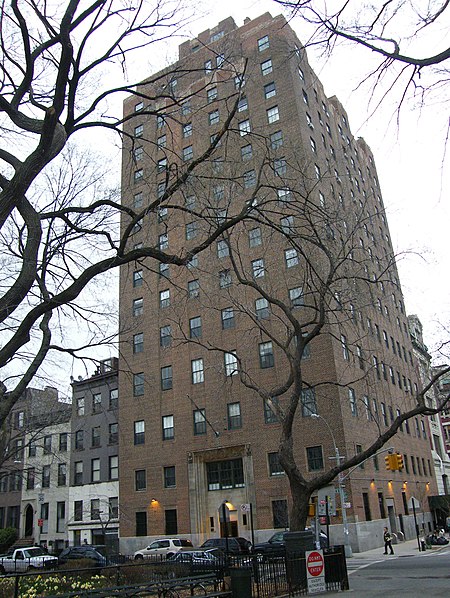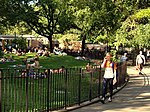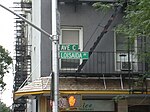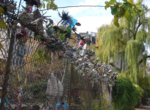Christodora House
Alphabet City, ManhattanEast Village, ManhattanResidential buildings completed in 1928Residential buildings on the National Register of Historic Places in ManhattanResidential skyscrapers in Manhattan ... and 2 more
Settlement houses in New York CityUse mdy dates from August 2019

Christodora House is a historic building located at 143 Avenue B in the East Village/Alphabet City neighborhoods of Manhattan, New York City. It was designed by architect Henry C. Pelton (architect of Riverside Church) in the American Perpendicular Style and constructed in 1928 as a settlement house for low-income and immigrant residents, providing food, shelter, and educational and health services.
Excerpt from the Wikipedia article Christodora House (License: CC BY-SA 3.0, Authors, Images).Christodora House
East 9th Street, New York Manhattan
Geographical coordinates (GPS) Address Website Nearby Places Show on map
Geographical coordinates (GPS)
| Latitude | Longitude |
|---|---|
| N 40.726388888889 ° | E -73.980555555556 ° |
Address
Chilis on Wheels
East 9th Street
10009 New York, Manhattan
New York, United States
Open on Google Maps






